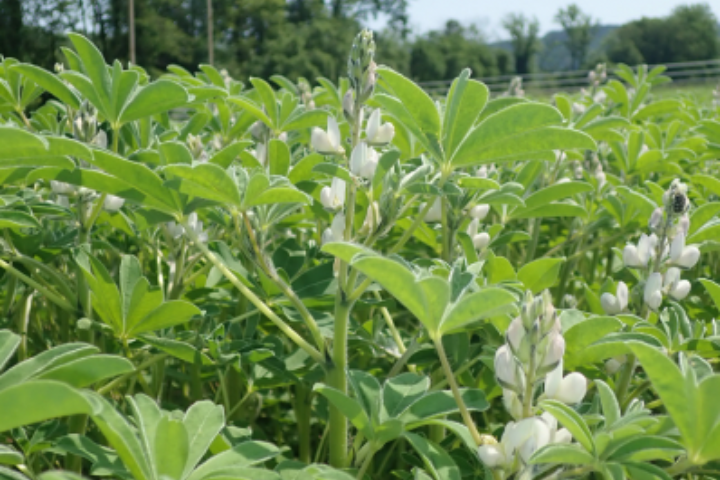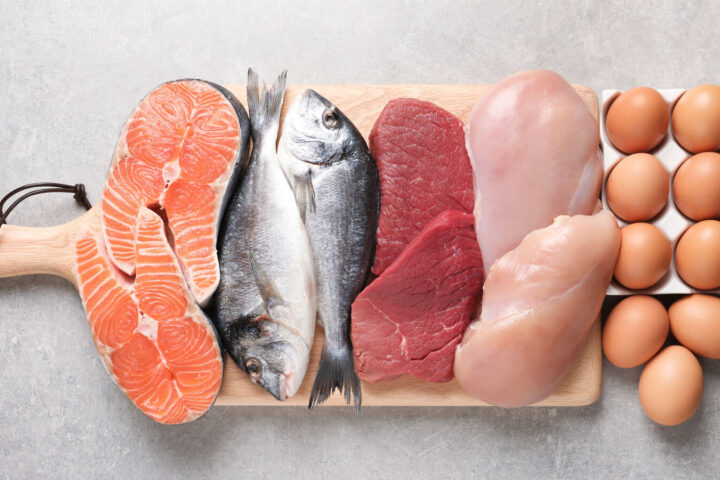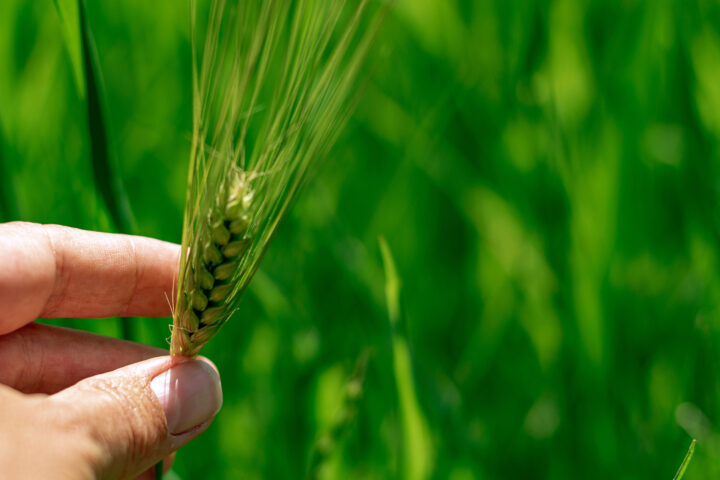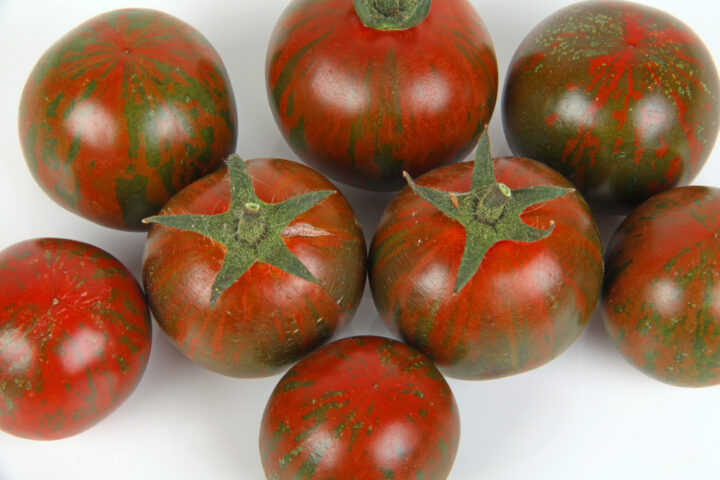
Cutting onions without crying
Onions are now available from Swiss retailers that should no longer cause tears when cut. The onions marketed under the name "Sunions" are significantly milder than the previously known varieties. It has taken over thirty years to achieve this using traditional breeding methods. The new onion variety is just one example of breeding with benefits for consumers.
Friday, January 12, 2024
Breeding new plant varieties is one of the biggest challenges facing agriculture in the coming decades. Due to climate change, growing conditions are deteriorating in many places. More adaptable and resilient varieties are therefore needed for resource-efficient agriculture. However, plant breeding also occasionally provides a remedy for the smaller problems of everyday life. As the "Coop Zeitung" newspaper reports, we now have onions on the market that no longer move cooks to tears when they cut them. The irritant effect is caused by a tear-inducing substance that protects the plant from predators in nature and is released in the kitchen when the onion is cut open.
30 years of work for the breeders
The "Sunions", bred by Bayer and now owned by BASF, are milder and contain less of the irritant that causes the typical moist eyes when cutting onions. According to the company, they also become milder and sweeter during storage in contrast to conventional varieties. However, the eye-friendly variety is the result of more than three decades of conventional breeding work through cross-breeding. Now it remains to be seen whether the effort has paid off and whether consumers will actually buy the new variety. After all, as the "Süddeutsche Zeitung" reports, the variety has already been on the market in the USA and Great Britain for a few years. In Switzerland, the new onions are initially only available "in selected Coop supermarkets", according to the "Coop-Zeitung". The Coop-Zeitung does not reveal whether the new onions are already being grown in Switzerland or are still being imported for the market launch, as was the case for the launch in the UK.
Varieties with consumer benefits are becoming increasingly important
The Sunion onion follows a clear trend: to focus even more on the needs of consumers, particularly vegetables and fruit, and thus make them even more marketable for farmers. What consumers want today is fresh fruit and vegetables that fit in with their busy and health-conscious lifestyles.
For example, peas for snacking such as the new sweet pea "Snak Hero", a tasty alternative to traditional snacks. Whether eaten raw or cooked, the nutritious green pods have a fresh, crunchy texture. They are an excellent choice for the lunchbox or rucksack of children and adults on the go. Or sweetcorn, which is not only characterised by its sweetness, but also impresses health-conscious consumers with its high potassium and magnesium content. And who hasn't seen the sad picture of the obligatory lettuce leaf in a hamburger - limp and wilted. The new "Burger Leaf" lettuce variety is perfect for round sandwich buns. The round shape of the lettuce leaves and their permanently crunchy texture, even when in contact with hot food, make them the ideal ingredient for hamburgers and other hot sandwiches. As the round leaves do not have to be specially cut to the shape of the rolls, there is also less waste.
The Burger Leaf salad thus contributes to the prevention of food waste - as does the cauliflower variety iStem with edible head leaves and stalk and broccoli EasyBroq, a type of broccoli with a long, tender and therefore also edible stalk. The long stalks also make it easier for the farmer to harvest. These are just a few examples of current variety breeding with explicit consumer benefits.
Faster to new desired properties thanks to modern breeding
New breeding methods will play a decisive role in making agricultural products more sustainable, healthier and more climate-friendly in the future. Genome editing has the potential to make new varieties with improved properties available to farmers and consumers in an efficient and timely manner, or to specifically develop proven and popular varieties with specific properties - without losing the proven properties. In potatoes, for example, resistance genes are often contained in the wild types. However, many undesirable mutations are also bred in through cross-breeding using conventional non-targeted breeding methods. This necessitates many lengthy backcrossing steps and can take decades - in the case of "Sunion" onions over 30 years, as reported. But this time is lacking in view of the challenges facing agriculture.
Examples of improved cultivation characteristics through modern breeding include drought-tolerant corn, potatoes that are resistant to late blight and apples that are resistant to fire blight. And in terms of consumer benefits, in addition to the reduction of irritants and allergens - such as gluten or the irritant in onions - particular attention is being paid to "functional food" in order to support people with less access to a balanced diet. This involves using genome editing to enrich food with additional nutrients such as vitamins, minerals, unsaturated fatty acids or bacterial cultures. Current examples of this include tomatoes with a high amino acid content or lettuce with more vitamins B and C as well as beta-carotene.
The Swiss Academy of Sciences (SCNAT) recently published examples of genome-edited crops that are suitable for Swiss agriculture. swiss-food.ch has also compiled a list of possible applications of new breeding technologies in Switzerland. It is no coincidence that improved agronomic traits and quality characteristics top the list of 140 genome-edited crops. However, the examples mentioned above show that breeding with consumer and health benefits is promising and that we as consumers can look forward to numerous new varieties in the coming years.
Sources
Related articles

A Superfood with Benefits and Challenges
Sweet lupin is Biovision’s “Superfood of the Year 2026.” It delivers high protein content, improves soils and supports biodiversity. Yet a closer look at agricultural practice shows that without breeding, crop protection and innovation, even this superfood remains a challenging crop.

Sales bans due to PFAS: Should we be worried?
After spectacular sales bans on fish and meat due to PFAS contamination, consumers are asking themselves: How dangerous are these substances really – and what can still be placed in the shopping basket without concern?

How German Experts View New Breeding Techniques
In hardly any other country is the idyllic image of organic farming cultivated in the public sphere as carefully as in Germany. Naturalness and rural authenticity are powerful mental refuges for many Germans. Against this backdrop, it is hardly surprising that resistance to new breeding techniques is strong – and that ignorance about the realities of organic farming sometimes appears almost deliberate.

Why consumers accept gene-edited foods on their plates
Acceptance of gene-edited foods increases when the tangible benefits for consumers are easy to understand. A recent study by the Center for Food Integrity (CFI), conducted in collaboration with FMI – The Food Industry Association, shows that consumers evaluate technologies such as genome editing positively when they recognize clear advantages for health, the environment, or food security.

